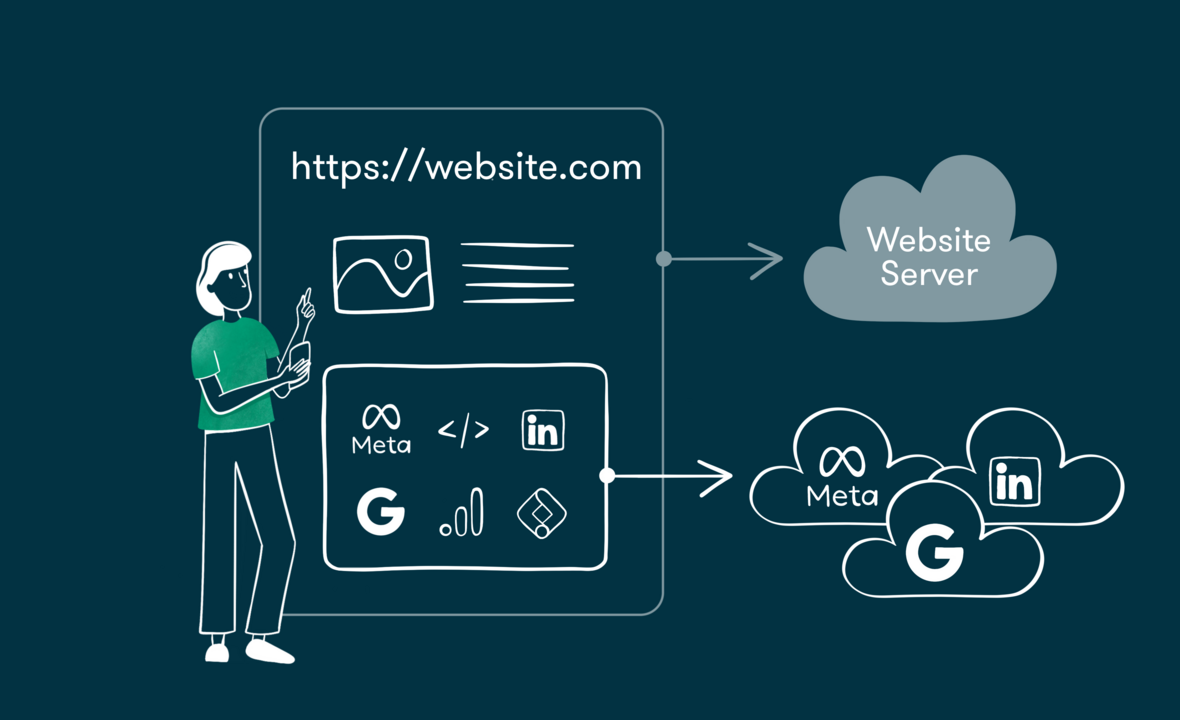Server-side tracking: the data protection-compliant game changer in digital sales
How you can use additional data points and an improved database to increase the performance of campaigns and websites and boost your digital sales. Especially in the B2B environment, where traffic is often lower, a good database ensures reliable KPIs. This makes decisions more informed and campaigns, such as Google Ads, perform better.

From client-side to server-side tracking
Until now, companies have relied on client-side tracking to track their marketing activities (whether Google Analytics, Facebook pixels, etc.). This involved integrating a tracking pixel directly into the website, which recorded the data of website visitors and sent it directly to the respective advertising platform.
However, with the introduction of new data protection directives such as the GDPR in the EU, this direct data transfer to non-EU countries is to be made more difficult in order to better protect the rights of internet users. This is why there is a new tracking method called serverside tracking.
How does Serverside Tracking work?
With server-side tracking, the collected user data is first sent to a server hosted in the EU. This server encrypts (hashes) the data before it is transmitted to advertising platforms such as Facebook. This means that these platforms still have all the information they need for effective campaign optimisation, but no longer any real personal data.
Advantages of Serverside Tracking at a glance:
Serverside Tracking is a data protection-compliant and powerful solution for us to successfully optimise marketing activities.
By transferring data processing to their own server, they benefit from more control, better data quality and quantity as well as higher campaign performance - without infringing the rights of Internet users.

Our data and analytics nerd from Vienna is a genius when it comes to data handling and analyses.
FAQs about Serverside Tracking
What is the difference between server-side and client-side tracking?
With client-side tracking, data is collected directly in the user's browser. Server-side tracking, on the other hand, runs via the server and offers more control over the collected data - particularly relevant in terms of data protection and tracking resilience.
Is server-side tracking GDPR-compliant?
Yes, server-side tracking can be implemented in compliance with the GDPR - provided that user consent is obtained correctly and data processing is documented transparently. A clean setup including consent management is important.
What advantages does server-side tracking offer companies?
It increases data quality, reduces data loss due to ad blockers or browser restrictions and improves control over data flows. In the B2B environment in particular, this is an important lever for well-founded decisions in marketing and sales.
When is it worth switching to server-side tracking?
As soon as tracking data is business-relevant - e.g. for campaign management, attribution or funnel analyses - and high data protection standards have to be met at the same time, server-side tracking is the more sustainable solution.









